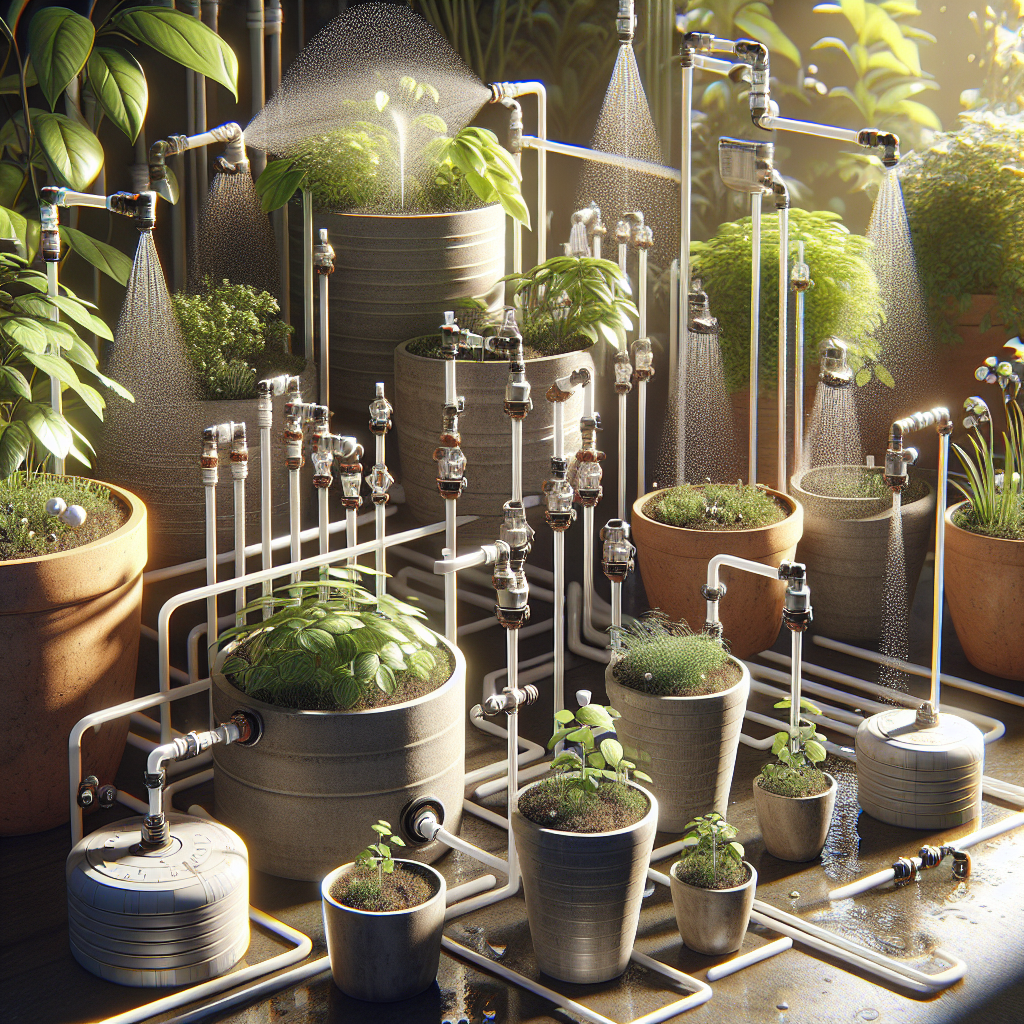Gardening can be a rewarding and therapeutic hobby, but it also requires effort and time to maintain healthy plants. One important aspect of caring for plants is ensuring they receive the right amount of water. Overwatering or underwatering can lead to stunted growth, root rot, and ultimately the demise of your plants. For those who have a busy schedule or simply want to make watering more efficient, implementing a slow drip watering system for pots can be a game-changer.
What is a Slow Drip Watering System?
A slow drip watering system is a method of delivering water directly to the roots of plants at a controlled rate. This ensures that plants receive consistent moisture without the risk of overwatering. By slowly releasing water into the soil, this system allows for better absorption and eliminates runoff, ensuring that every drop of water is used efficiently.
There are various ways to set up a slow drip watering system for pots, depending on your preferences and budget. Some popular options include self-watering pots, drip irrigation systems, clay pot irrigation, and DIY setups using materials like plastic bottles or tubing.
Benefits of Implementing a Slow Drip Watering System
There are several benefits to using a slow drip watering system for pots. Here are some reasons why you might consider implementing this method in your garden:
1. Efficient Water Usage: With a slow drip system, you can ensure that water goes directly to the roots where it’s needed most. This helps reduce evaporation and runoff, making your watering efforts more efficient.
2. Consistent Moisture: Plants thrive when they receive consistent moisture levels. A slow drip system delivers water slowly and evenly, helping to prevent underwatering or overwatering.
3. Time-Saving: Once you set up a slow drip system, you won’t have to worry about manually watering your pots as often. This can be especially beneficial if you have a busy schedule or tend to forget about watering your plants.
4. Healthier Plants: Overwatering can lead to root rot and other issues that can harm your plants’ health. By using a slow drip system, you can help maintain optimal soil moisture levels and promote healthier plant growth.
How to Implement a Slow Drip Watering System
There are several methods for setting up a slow drip watering system for pots. Here are some popular options:
1. Self-Watering Pots: Self-watering pots come with built-in reservoirs that allow excess water to collect at the bottom while maintaining consistent moisture levels in the soil. These pots are easy to use and are available in various sizes and styles.
2. Drip Irrigation Systems: Drip irrigation systems consist of tubing with emitters that deliver water directly to the base of each plant. These systems can be connected to a timer or controlled manually, making them convenient for busy gardeners.
3. Clay Pot Irrigation: Clay pot irrigation involves burying unglazed terracotta pots in the soil next to plants so that they gradually release water into the surrounding soil through osmosis.
4. DIY Setups: If you’re on a budget or prefer a hands-on approach, you can create your own slow drip watering system using materials like plastic bottles with pinholes, soaker hoses, or PVC tubing connected to water sources.
Tips for Maintaining Your Slow Drip Watering System
Once you’ve set up your slow drip watering system for pots, it’s important to maintain it properly to ensure its effectiveness:
1.Routine Check-Ups: Regularly inspect your system for clogs, leaks or damage that could affect its performance.
2.Adjust as Needed: Monitor soil moisture levels regularly and adjust your watering schedule based on weather conditions and plant needs.
3.Clean Regularly: Clean out any debris that may accumulate in emitters or tubing.
4.Winterization: In colder climates, be sure to drain all water from the system before winter sets in to prevent freezing damage.
5.Test Run: Test run your setup before leaving it unsupervised for an extended period of time.
In conclusion,
Implementing a slow-drip watering system for pots is an effective way to ensure your plants receive consistent moisture while conserving water resources and saving time on manual watering tasks.
By choosing the right setup based on your needs and preferences,
you can enjoy healthier plants with less effort invested in their care.
Whether you opt for self-watering pots,
drip irrigation systems,
clay pot irrigation,
or DIY solutions,
the key is regular maintenance
and adjustment
to keep your
slow-drip
system running smoothly.
So don’t let
your busy schedule
or forgetfulness stand in the way
of having beautiful,
lush greenery around you –
a
slow-dri
p
system could be just what you need
to take
your gardening game
to
the next level!













